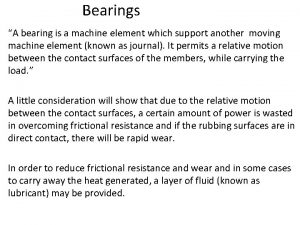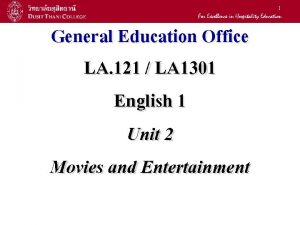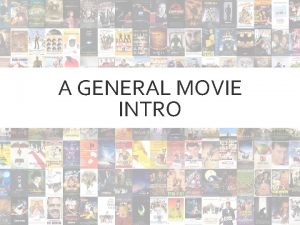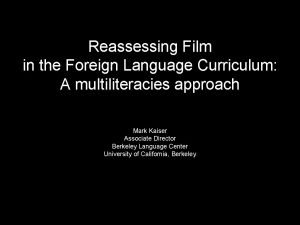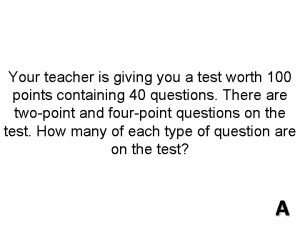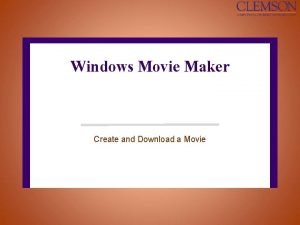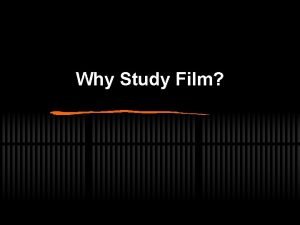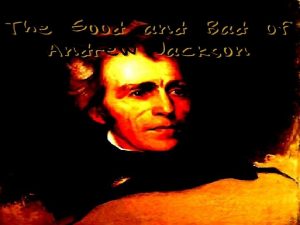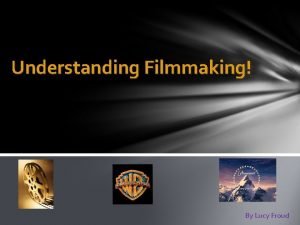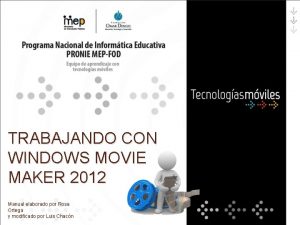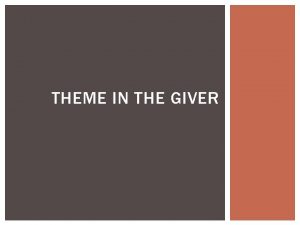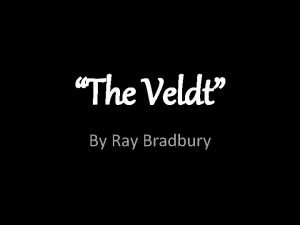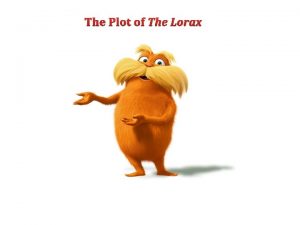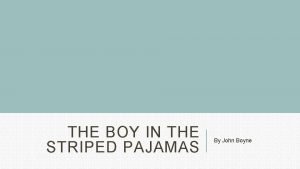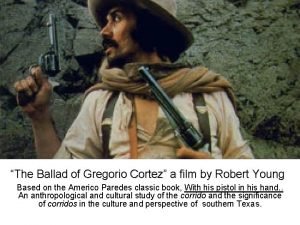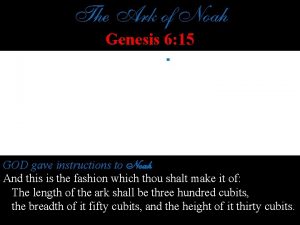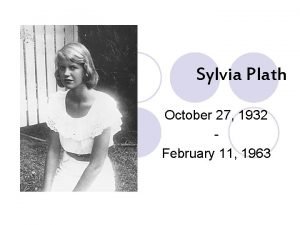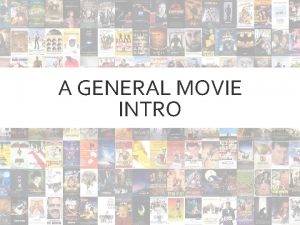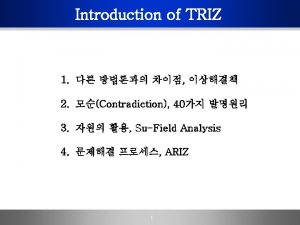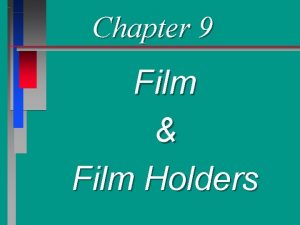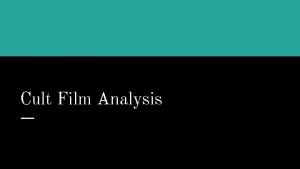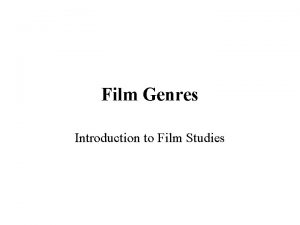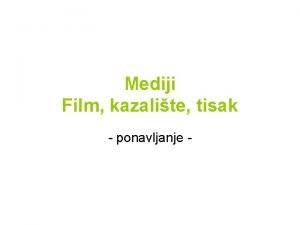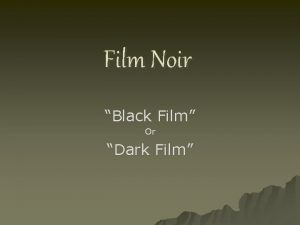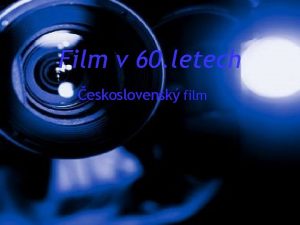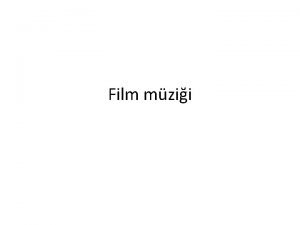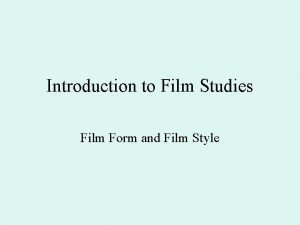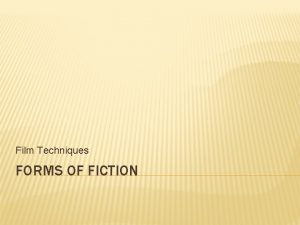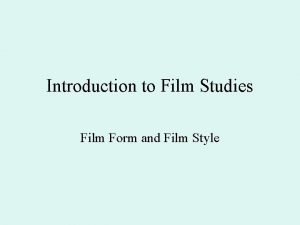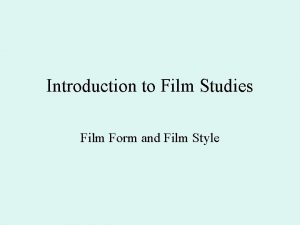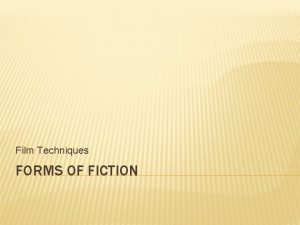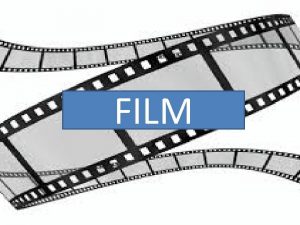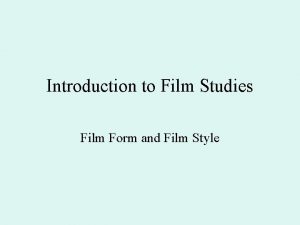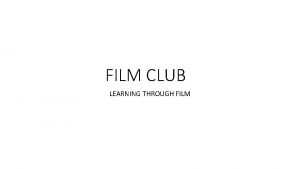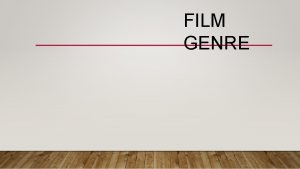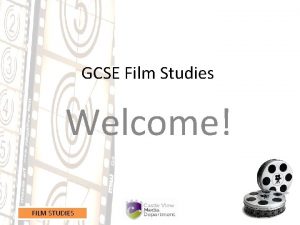A GENERAL MOVIE INTRO Film Language General Intro






























- Slides: 30

A GENERAL MOVIE INTRO

Film Language General Intro The Narrative Misè en Scene Cinematography Movie Types/Genre Editing Sound • • • Film History Beginnings/Early Film German Expressionism Soviet Montage French Avant-Garde Hollywood’s Golden Age Italian Neorealism

WHAT IS A MOVIE? An art form that employs a narrative - well, almost always

Editing makes it a unique art form: can control how the viewer sees a story

Audiences absorb movie meaning intuitively and instantly intuitive example: a lowangle shot…

A good film gets rid of distractions producing a highly manipulated & artificial reality ex: cutting in on action

Movies contain implicit and explicit meanings

Explicit: what the film is about Implicit: what is the movie trying to say? what does it mean? an overall message or point?

VIEWER EXPECTATIONS… The basic movie structure: 1) a clearly motivated protagonist 2) pursues a goal 3) obstacles 4) a clear resolution your experience of a movie is affected by how a particular film tells this story

Formal film analysis: analytical approach mostly concerned with film form… or the means in which the narrative is expressed Dissecting/understanding cinematography, sound, composition, design, mise-en-scene, performance and editing = reading a film

It’s possible to read too much meaning… but know that filmmakers exploit every tool at their disposal … therefore, everything is there for a reason

JUNO *

PRINCIPLES OF FILM FORM

FILM FORM & CONTENT Remember, very little, if anything is left to chance a movie is exceptionally organized & deliberately assembled

Film content: - the subject of a movie - what it’s about

Film Form: the means by which the subject of the movie is expressed and experienced doesn’t just let us see the subject, lets us see it in a particular way the tools and techniques that a filmmaker uses to convey meaning and mood

Film Form: the means by which the subject of the movie is expressed and experienced doesn’t just let us see the subject, lets us see it in a particular way the tools and techniques that a filmmaker uses to convey meaning and mood

WORKS OF ART NEED BOTH: CONTENT AND FORM

FILM FORM AND EXPECTATIONS

Audiences will form impressions quickly, sometimes opening credits in Hollywood, producers and screen writers assume the audience will decide if they like/dislike a movie in the first 10 minutes

Audiences expect that most movies start with a “normal” world - that is altered by a particular incident (the inciting incident) - compelling/forcing the protagonist to pursue a goal

The film’s narrative structure is written around the viewer’s desire to learn the answers. will Dorothy get back to Kansas? will Frodo destroy the ring? examples

This desire stresses the importance of the opening scene. (American Beauty ; Requiem; Babel; Shining)

FUNDAMENTALS OF FILM FORM

Movies depend on light. Light can be manipulated to create mood, reveal character, and convey meaning (Schindler’s List Blade Runner Mad Max) Movies provide an illusion of movement.

Movies manipulate space and time in unique ways. can move seamlessly from one space to another or make space move or fragment time in many ways (The Matrix) the camera is always selecting and manipulating what is seen on the screen

continuous record of action occurring in different locations - an illusion no other art form can convey as effectively (Godfather) can rearrange time: Citizen Kane, Atonement, Memento, Pulp Fiction

REALISM AND ANTIREALISM not every film strives to be “realistic”… but nearly all films attempt to immerse us in a world that is depicted convincingly

Verisimilitude: a convincing appearance of truth. movies achieve verisimilitude when they convince you that the things on the screen (people, places…), no matter how fantastic or anti-realistic they are, are real

Cinematic/film language: - accepted systems, methods, or conventions that movies communicate with the viewer § Referring to the ‘text of a movie’ or ‘reading a particular shot/scene’ means to apply the understanding of cinematic language Film Language The Narrative Misè en Scene Cinematography Movie Types/Genre Editing Sound
 Windows live editor
Windows live editor Wedge film journal bearing
Wedge film journal bearing La 1301
La 1301 Language movie
Language movie Assembly language introduction
Assembly language introduction Language
Language Planos en cinematografia
Planos en cinematografia Where did general lee surrender to general grant?
Where did general lee surrender to general grant? General syntactic criteria of a programming language
General syntactic criteria of a programming language General purpose registers in assembly language
General purpose registers in assembly language One night a theater sold 548 movie tickets
One night a theater sold 548 movie tickets Windows movie maker 2012 download
Windows movie maker 2012 download Businessman chris gardner
Businessman chris gardner How to analyze film
How to analyze film Who is in this picture
Who is in this picture Tourism niches
Tourism niches 3 stages of filmmaking
3 stages of filmmaking Movie maker 2016
Movie maker 2016 Ventana principal de movie maker
Ventana principal de movie maker Thriller movie conventions
Thriller movie conventions Whats the theme of the giver
Whats the theme of the giver Ray bradbury the veldt analysis
Ray bradbury the veldt analysis Dr seuss sneetches movie
Dr seuss sneetches movie Story elements of the lorax
Story elements of the lorax The lorax illustrations
The lorax illustrations The butterfly circus worksheet
The butterfly circus worksheet Boy in the striped pajamas movie trailer
Boy in the striped pajamas movie trailer The ballad of gregorio cortez movie
The ballad of gregorio cortez movie Genesis 6 16
Genesis 6 16 Sylvia plath movie
Sylvia plath movie There was were fifteen candies in that bag
There was were fifteen candies in that bag

